Contact
Contact Office of the Dean
129 Sibley Dome
Phone: (607) 255-9110
aapdean@cornell.edu
Monday–Friday, 8 a.m.–4:30 p.m.
The Mui Ho Fine Arts Library in Rand Hall welcomes patrons to a facility that houses one of the best circulating collections of fine arts and design materials in the country. The new library was designed by architect Wolfgang Tschapeller (M.Arch. '87), whose goal for the project was a 21st-century interpretation of the grand reading rooms associated with great research collections.
Following an 18-month renovation of historic Rand Hall (1911) that included the removal of the existing building's third floor, the library is now four levels of massed stacks with books suspended as a centerpiece.
The ground floor of Rand Hall is a new material practice center, including wood, metal, and digital fabrication shops, a maker space, a research lab, and a small-tool repository.
Mui Ho '62 (B.Arch. '66), an architect and educator retired from the University of California–Berkeley, committed $6 million to the library in 2013. The New York City–based STV is the architectural firm of record, with a team led by Harris Feinn (B.Arch. '69, M.Arch. '71).
Virtual Tour
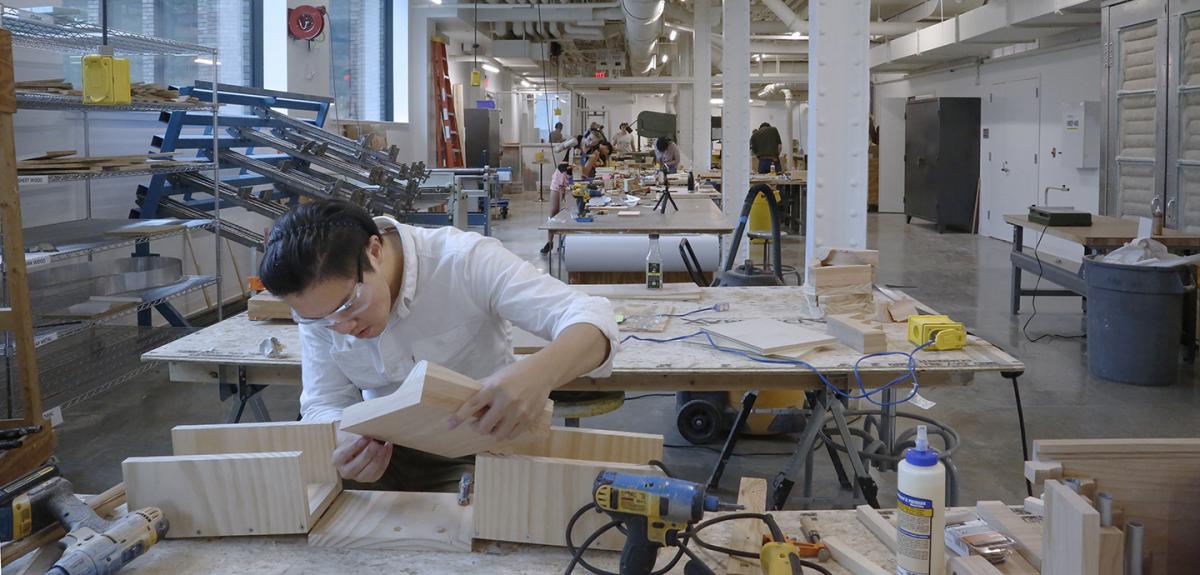
Comprehensive analog and digital fabrication center comprising wood and metal shops, a digital fabrication facility, hand tool repository, faculty research lab, and an expansive makerspace.
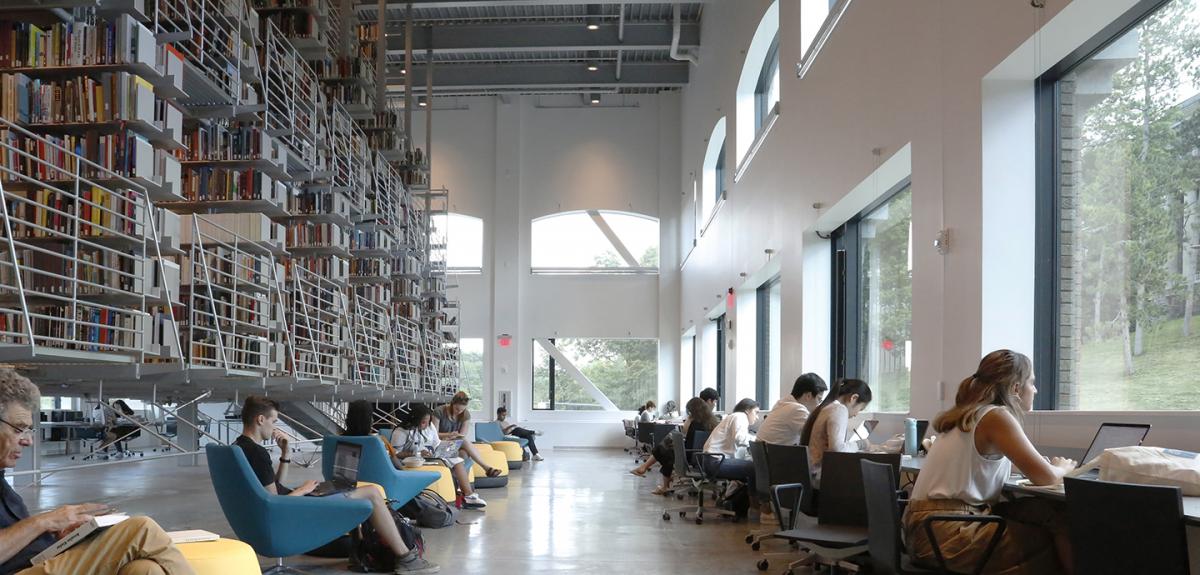
Book stacks, open reading room with flexible and collaborative workspaces, 18 individual study carrels for focused research, public computing and output devices, circulation desks, and direct access to the L. P. Kwee Studios in Milstein Hall.

Book stacks; seminar room for classes, meetings, and collaboration; and librarian offices.
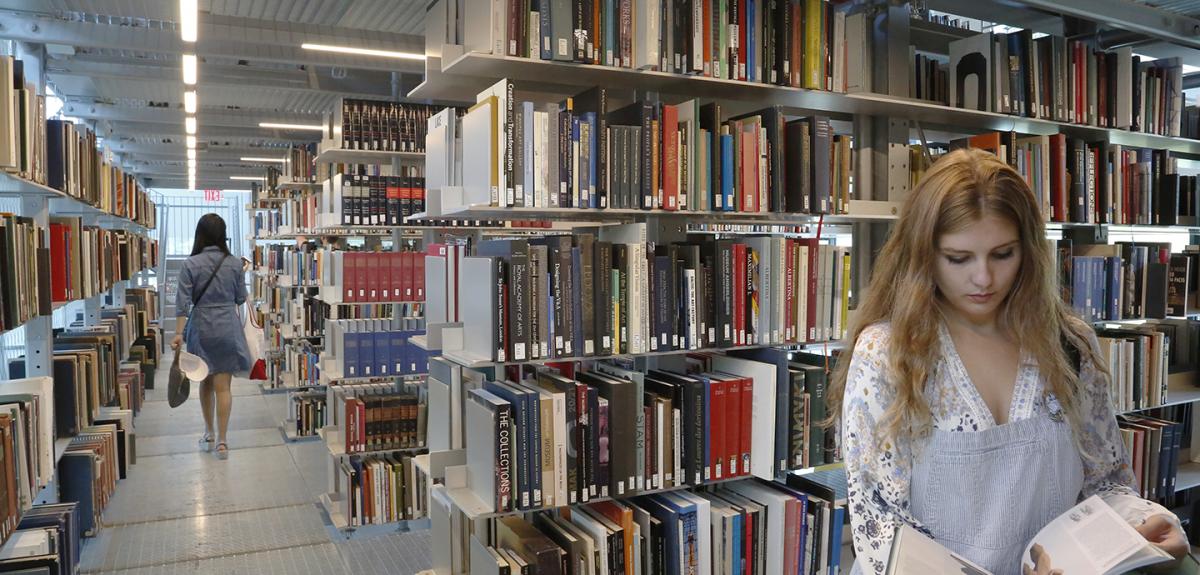
Book stacks, display area, and reading room overlook the expansive spaces below.
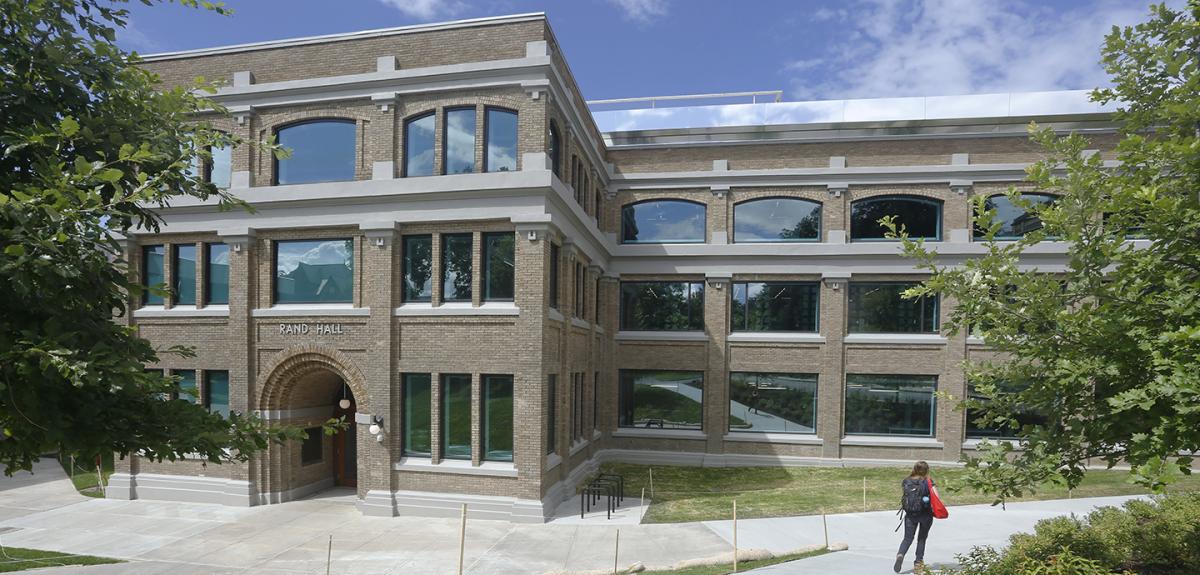
The entire building envelope was remediated during construction, including thermal insulation and double-glazed windows that significantly improved the energy performance of Rand Hall.
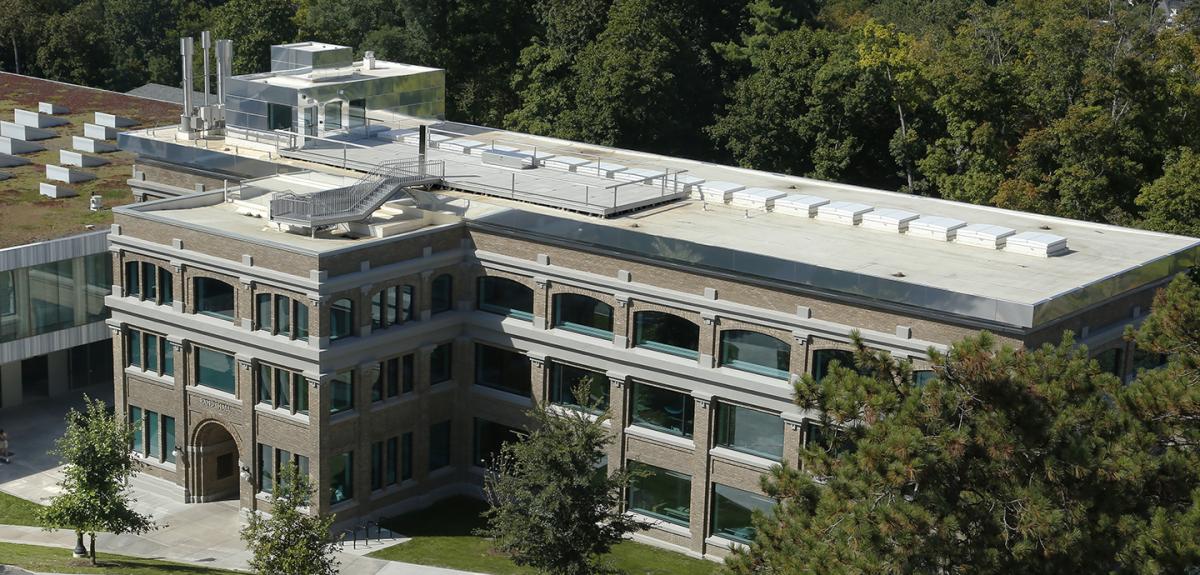
The accessible roof has a structurally reinforced deck to host full-scale experimental pavilions that will be designed and fabricated by Cornell faculty and students. Temporary and speculative, these constructions will anchor the site with rooftop testimonials to ongoing research in architecture and the built environment.
A view of Rand Hall, home of the Mui Ho Fine Arts Library.
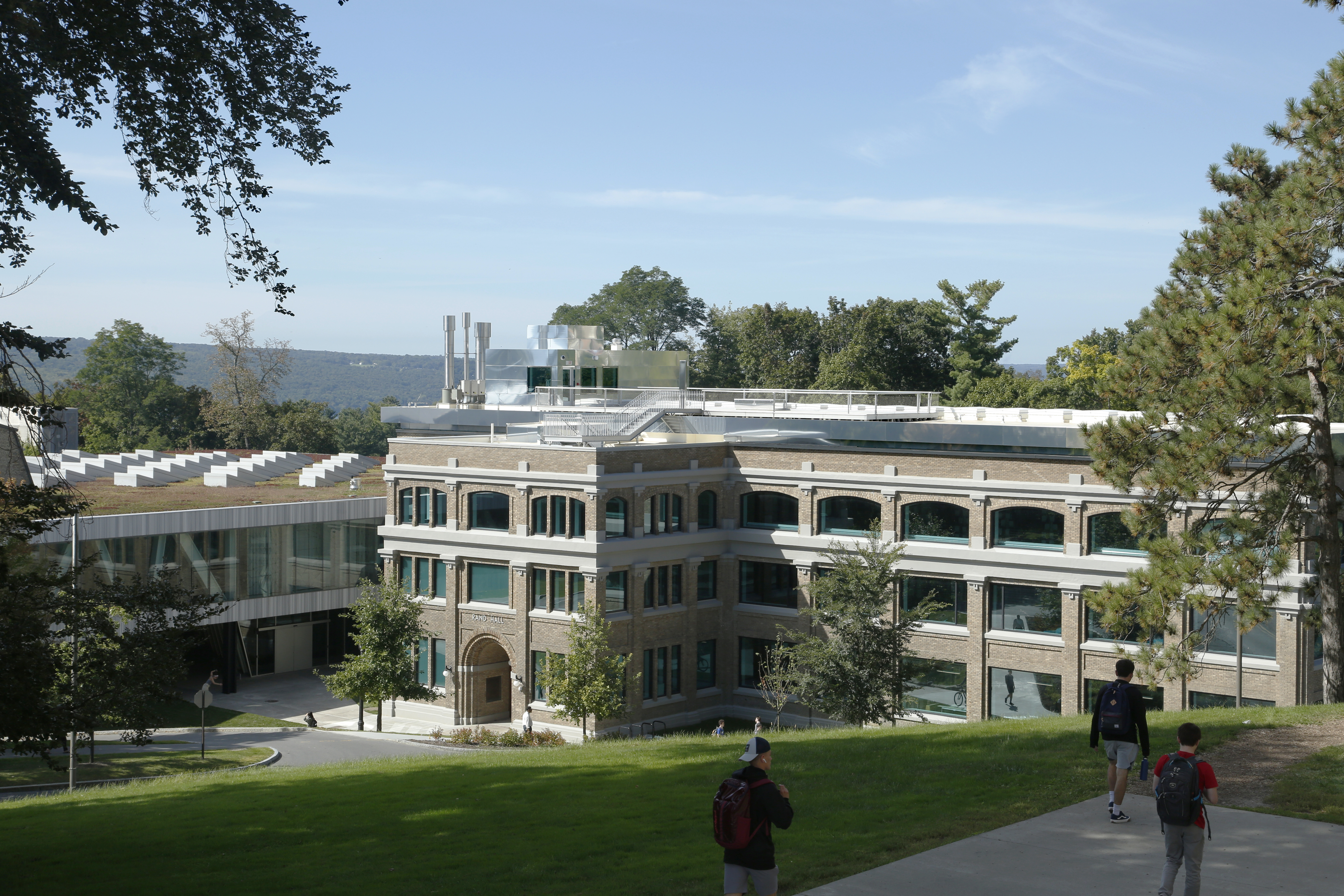
Entering the Fine Arts Library from Milstein Hall.
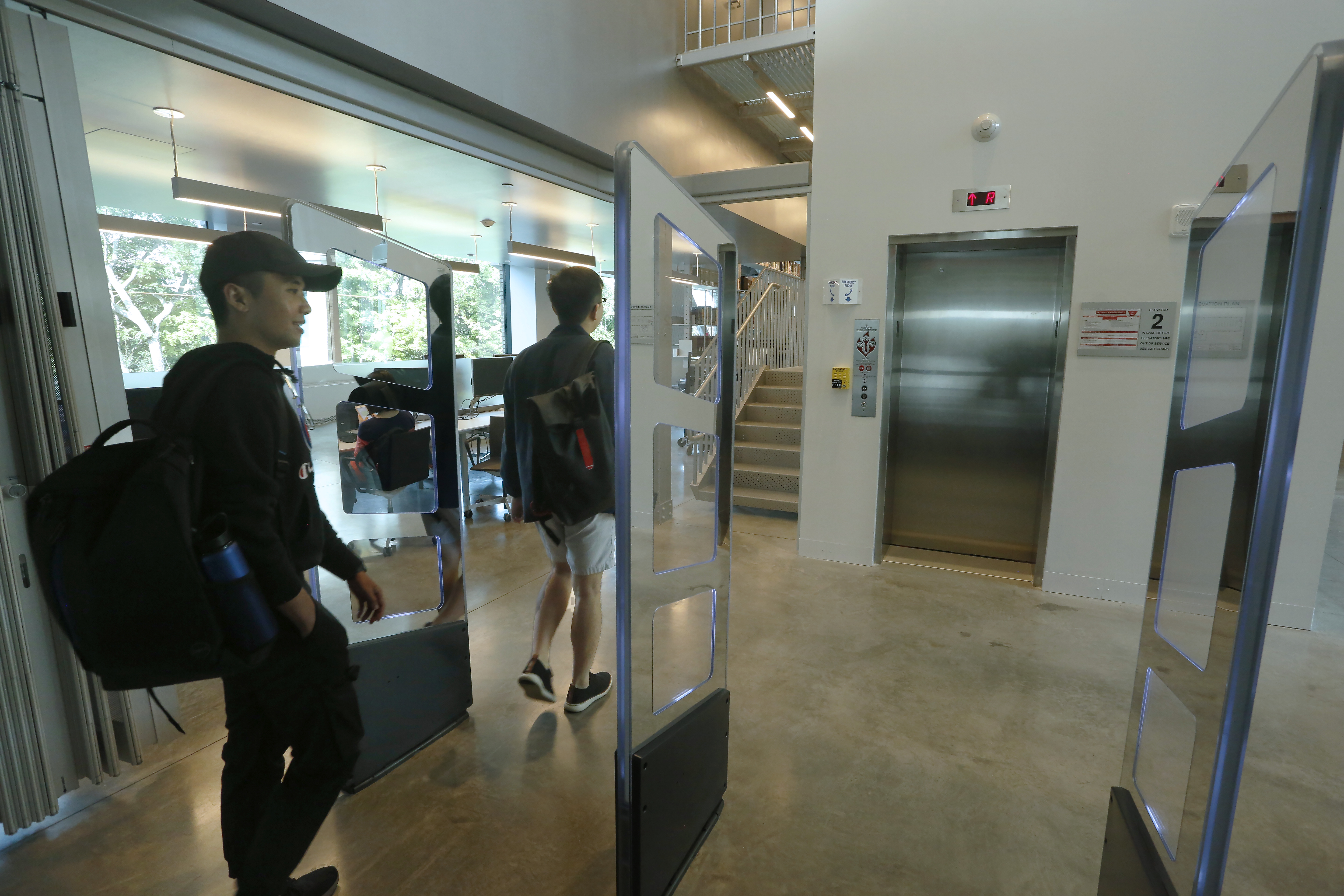
A view of the Frances Schloss Reading Room.
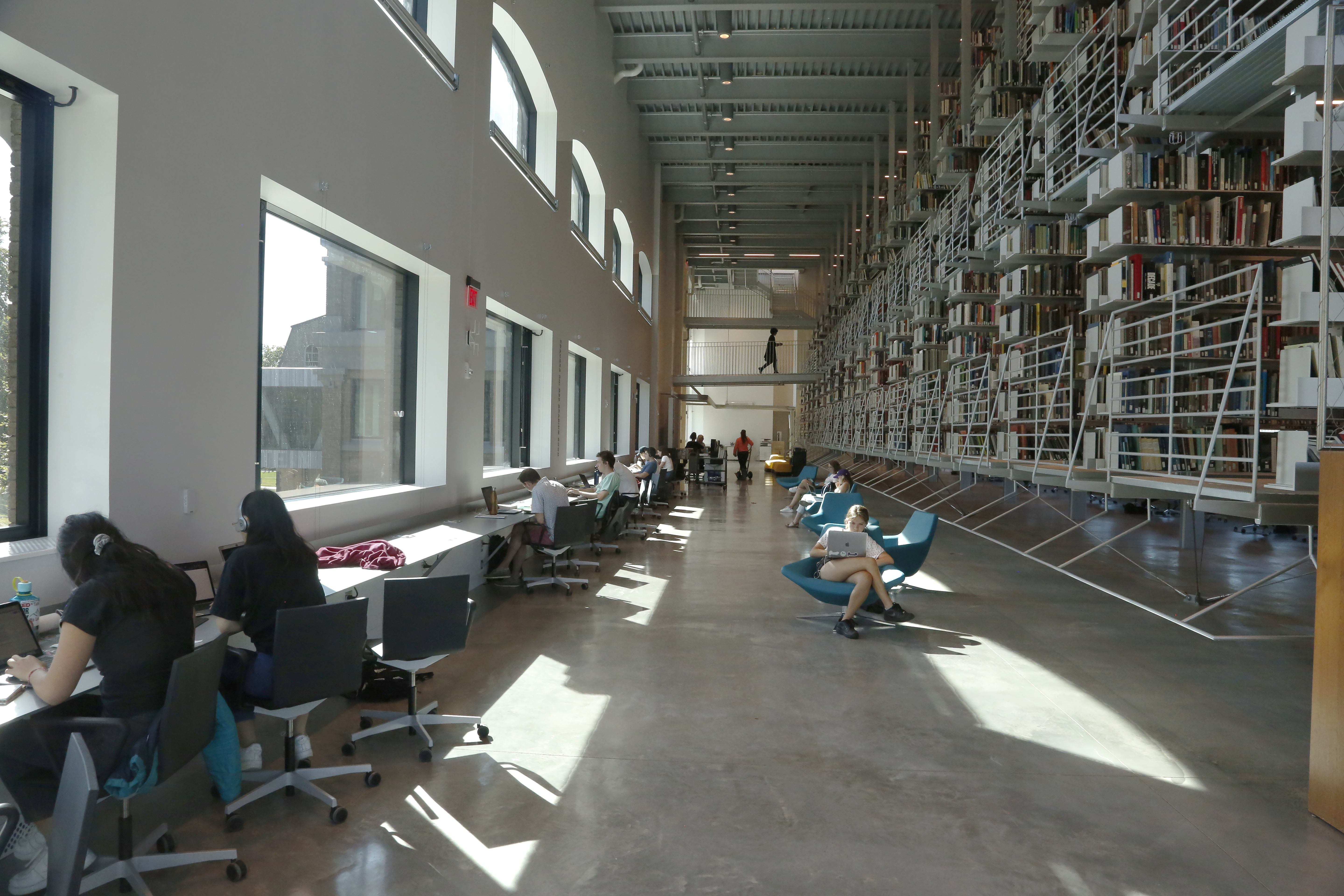
A view of the book stacks and study carrels along the north wall of the Mui Ho Fine Arts Library.
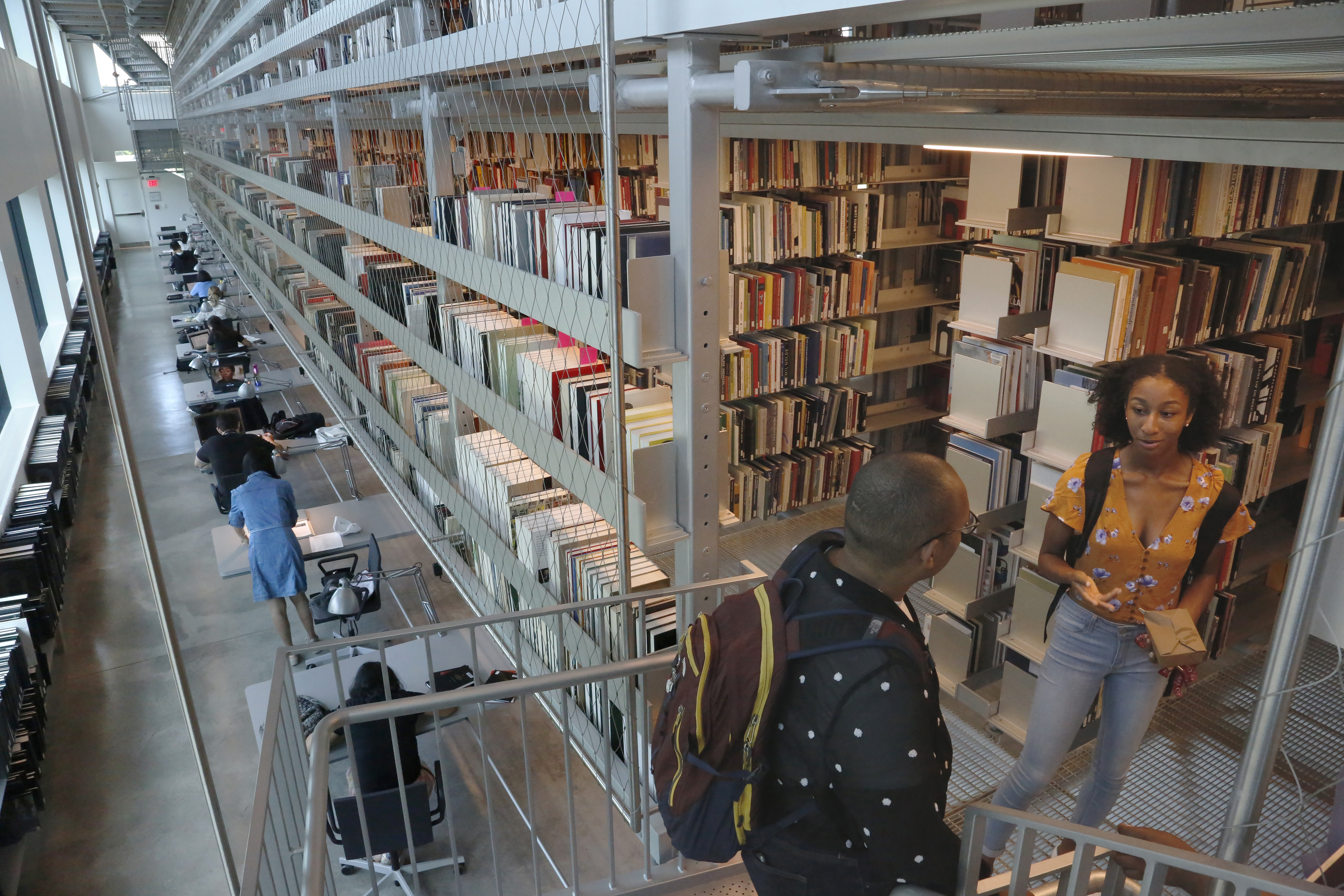
Students using the Kent Kleinman Book Stacks.
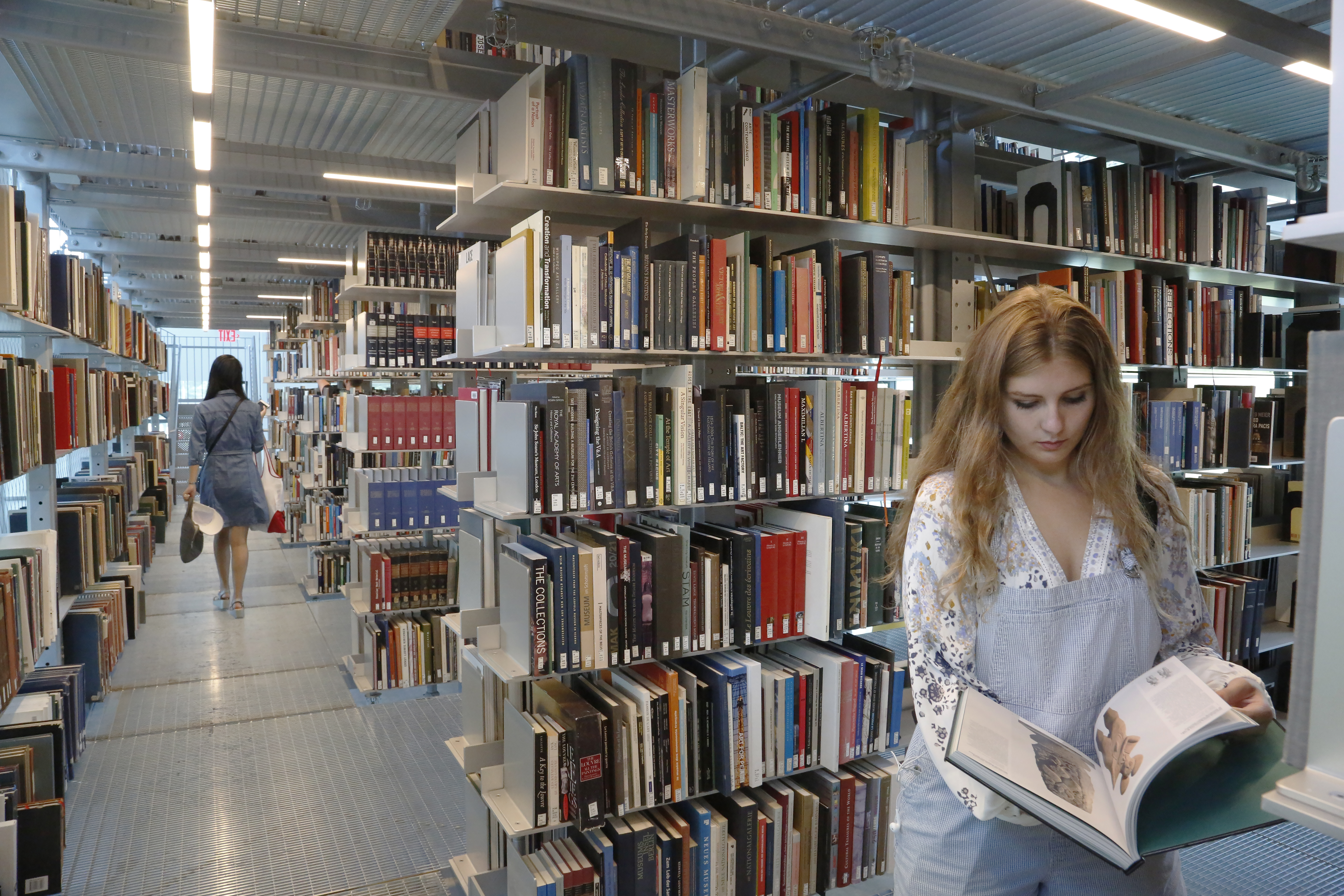
The Chan Moon Sum Public Computing stations in the Fine Arts Library.
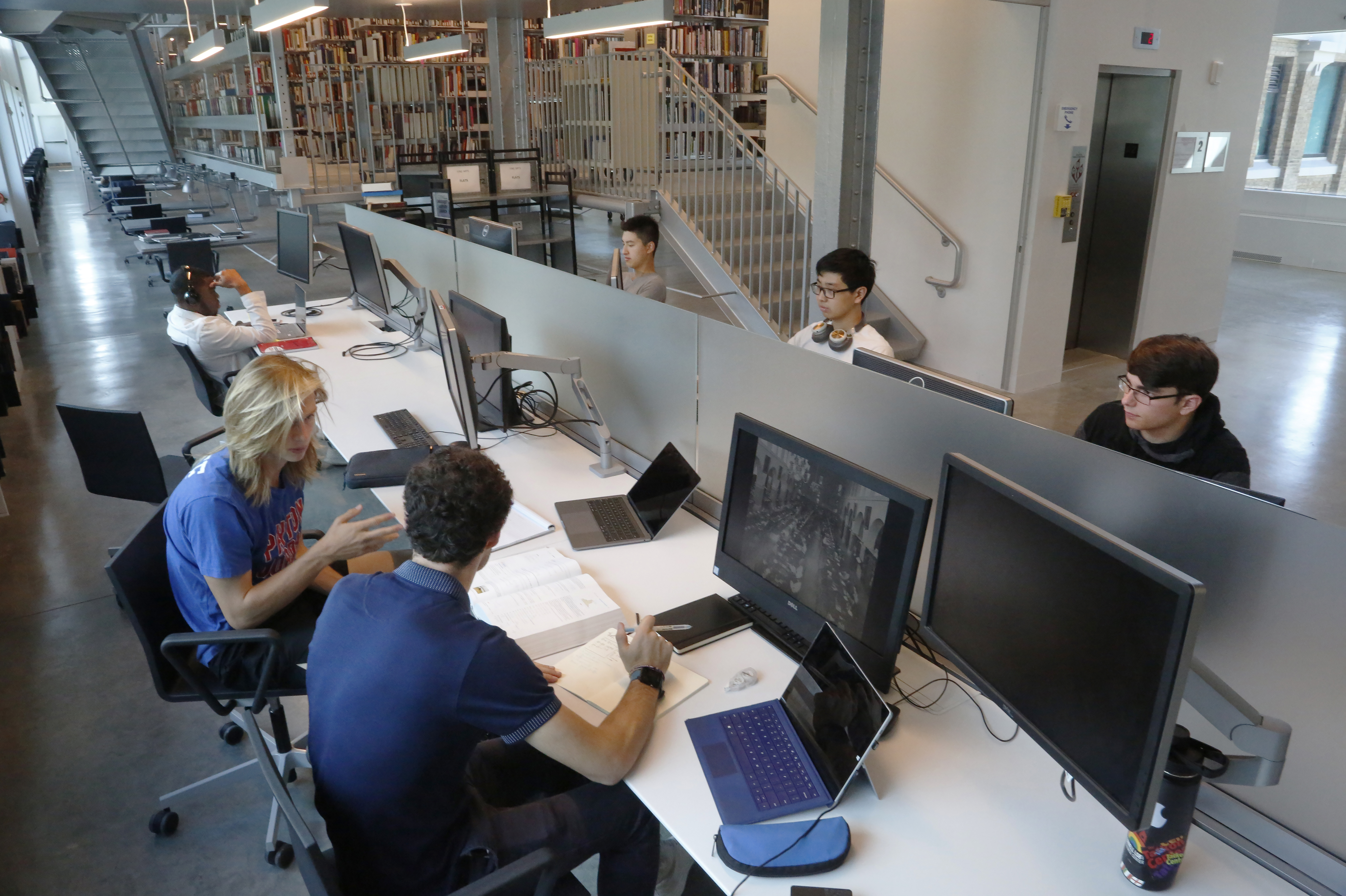
A view of the book stacks and study carrels along the north side of the library.
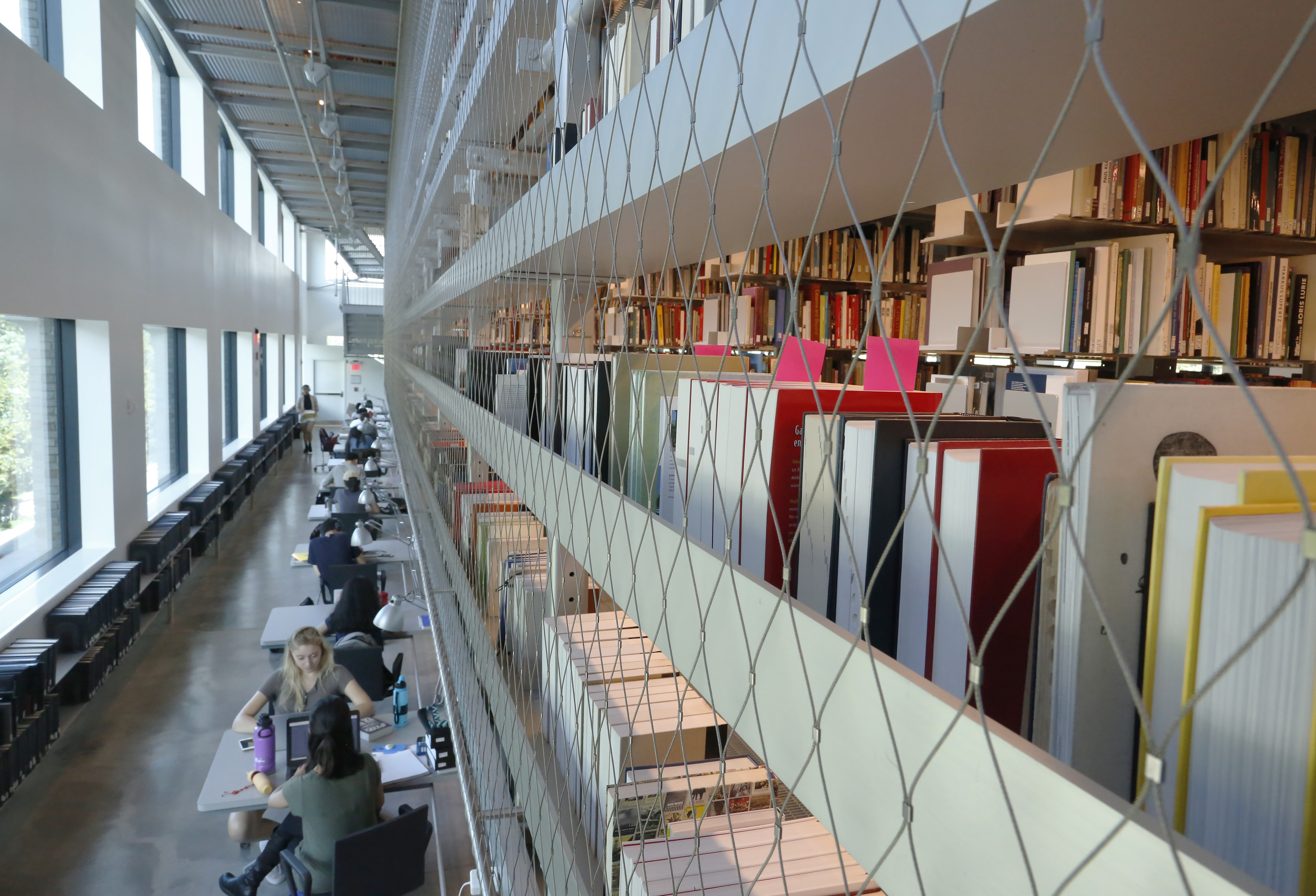
A class meeting in the third floor conference room.
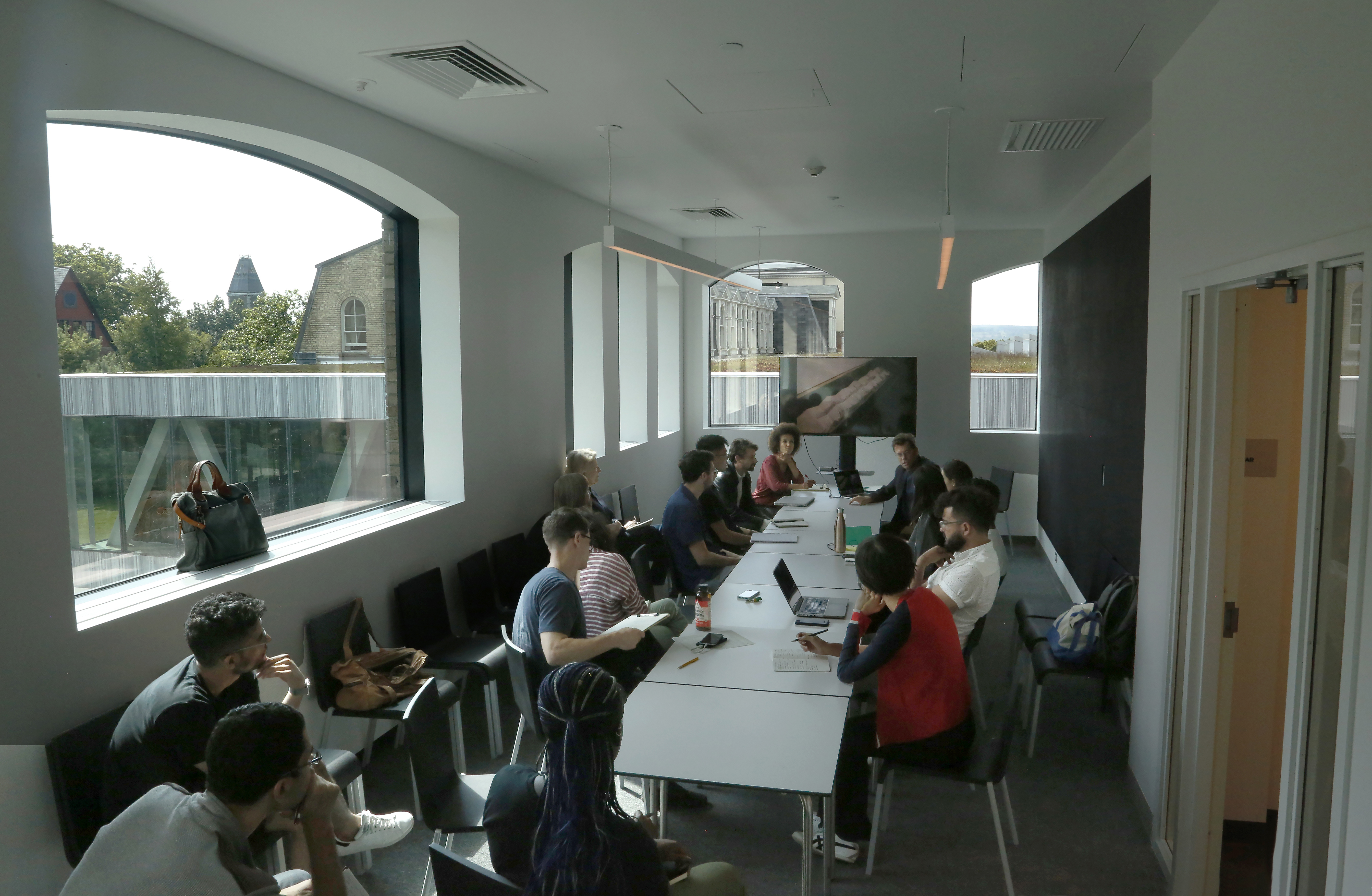
Students working in the study carrels.

Administrative Supervisor and Instructional Technologies Coordinator Brennen Feint assisting a student in the Kent Kleinman Book Stacks.
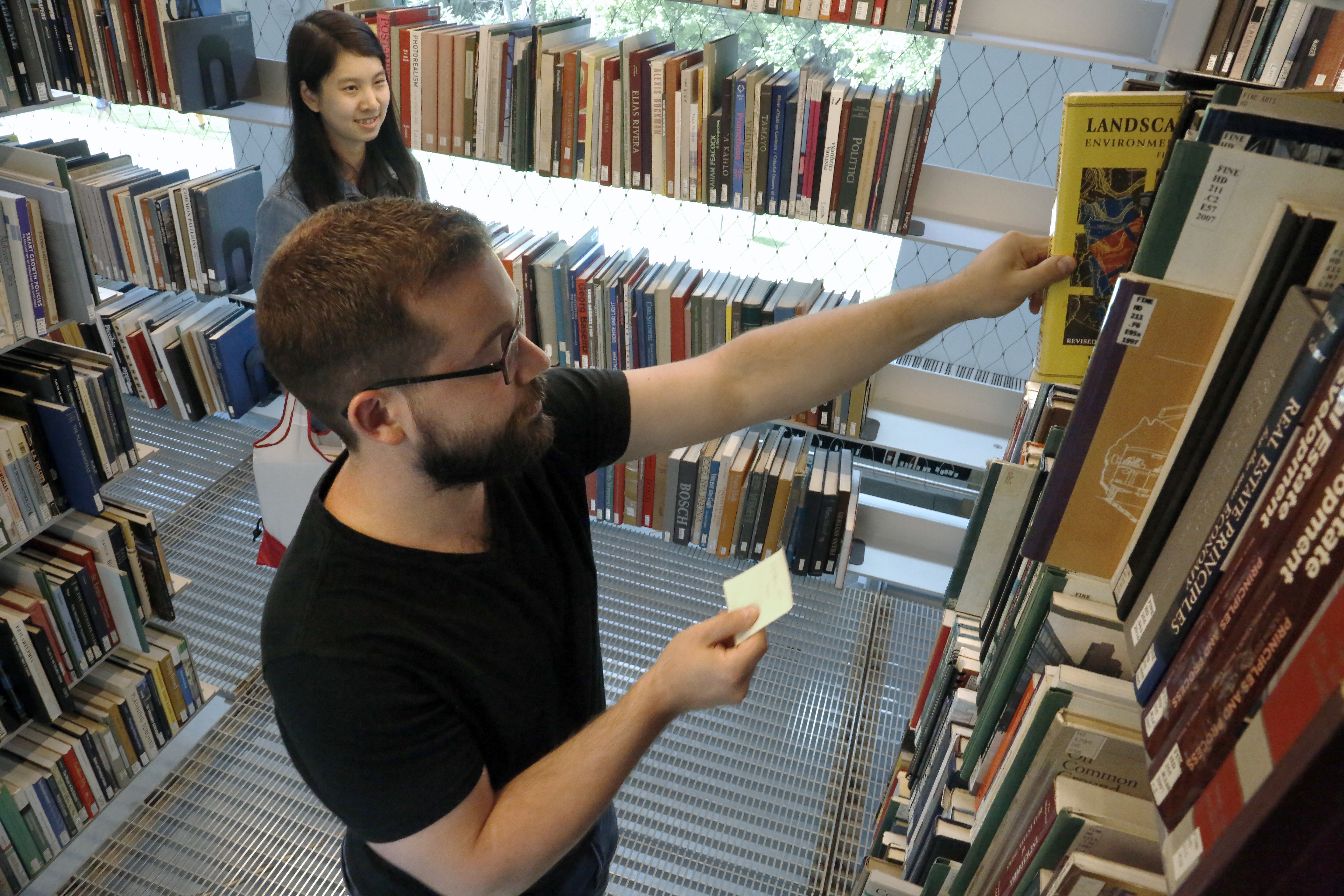
Mui Ho '62 (B.Arch. '66), left, with Frances Shloss (B.Arch. '45) at the dedication ceremony on September 9, 2019.
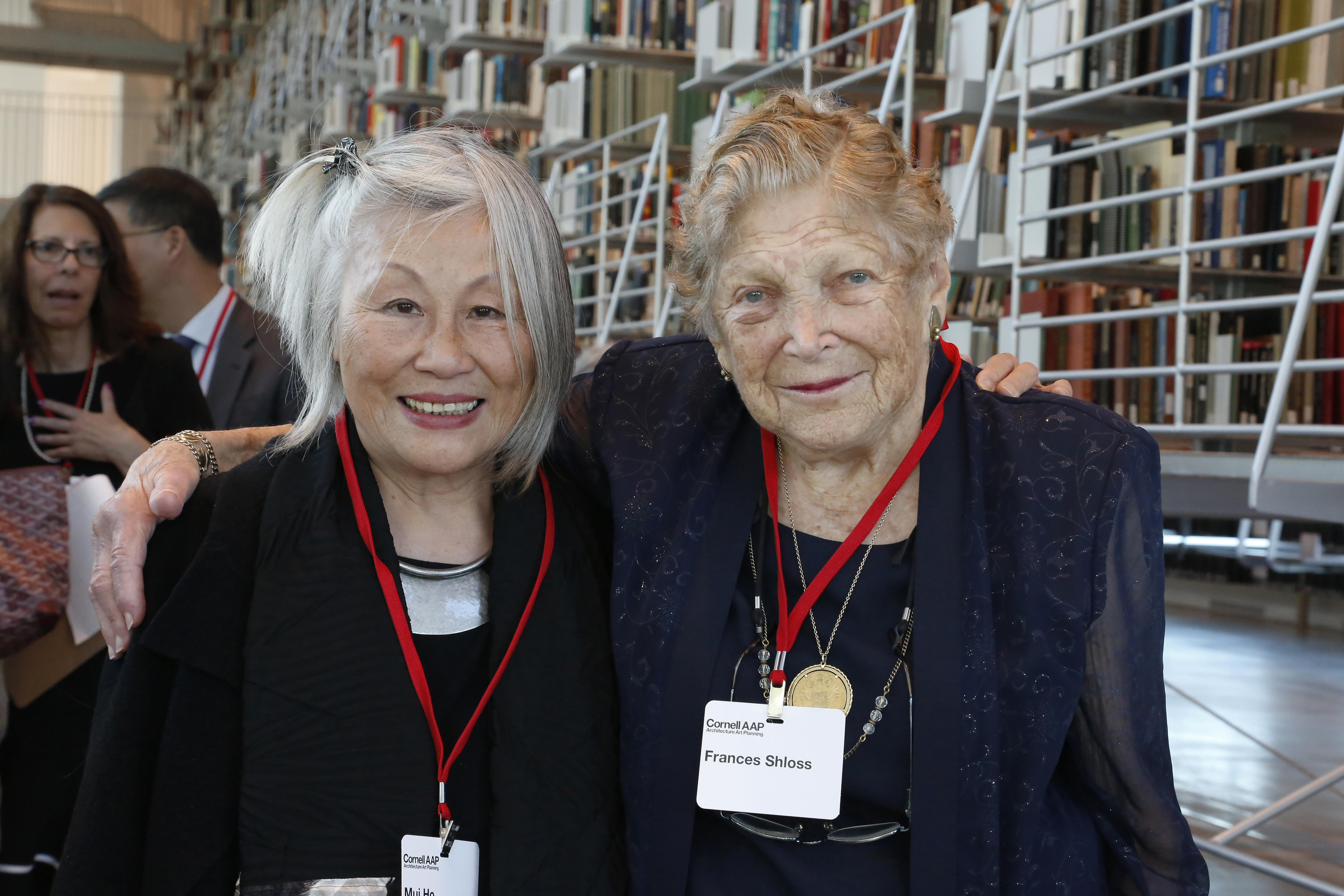
Students working in the study carrels along the north side of the library.
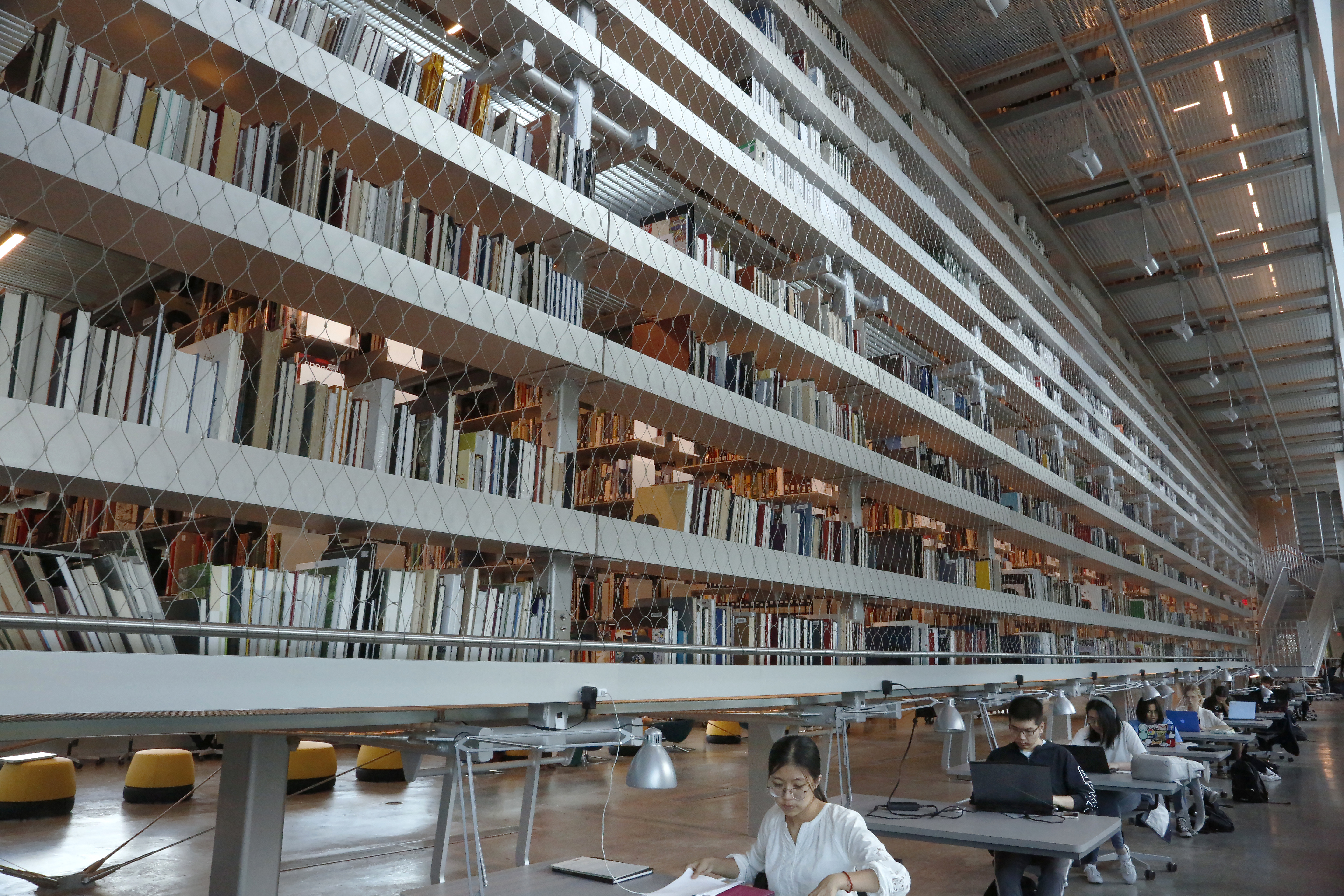
Guests at the formal dedication on September 9, 2019.
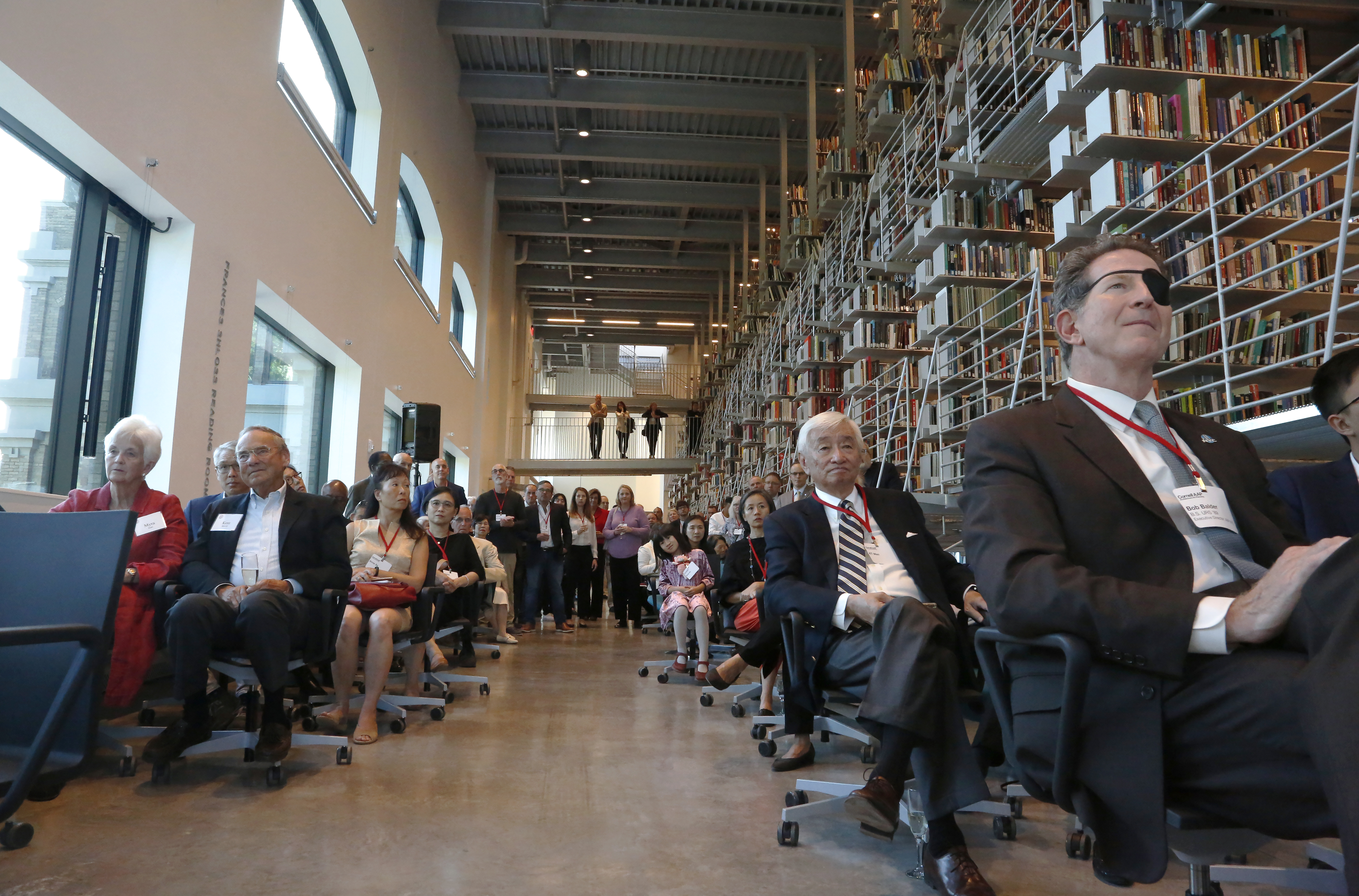
A view of the Frances Shloss Reading Room.
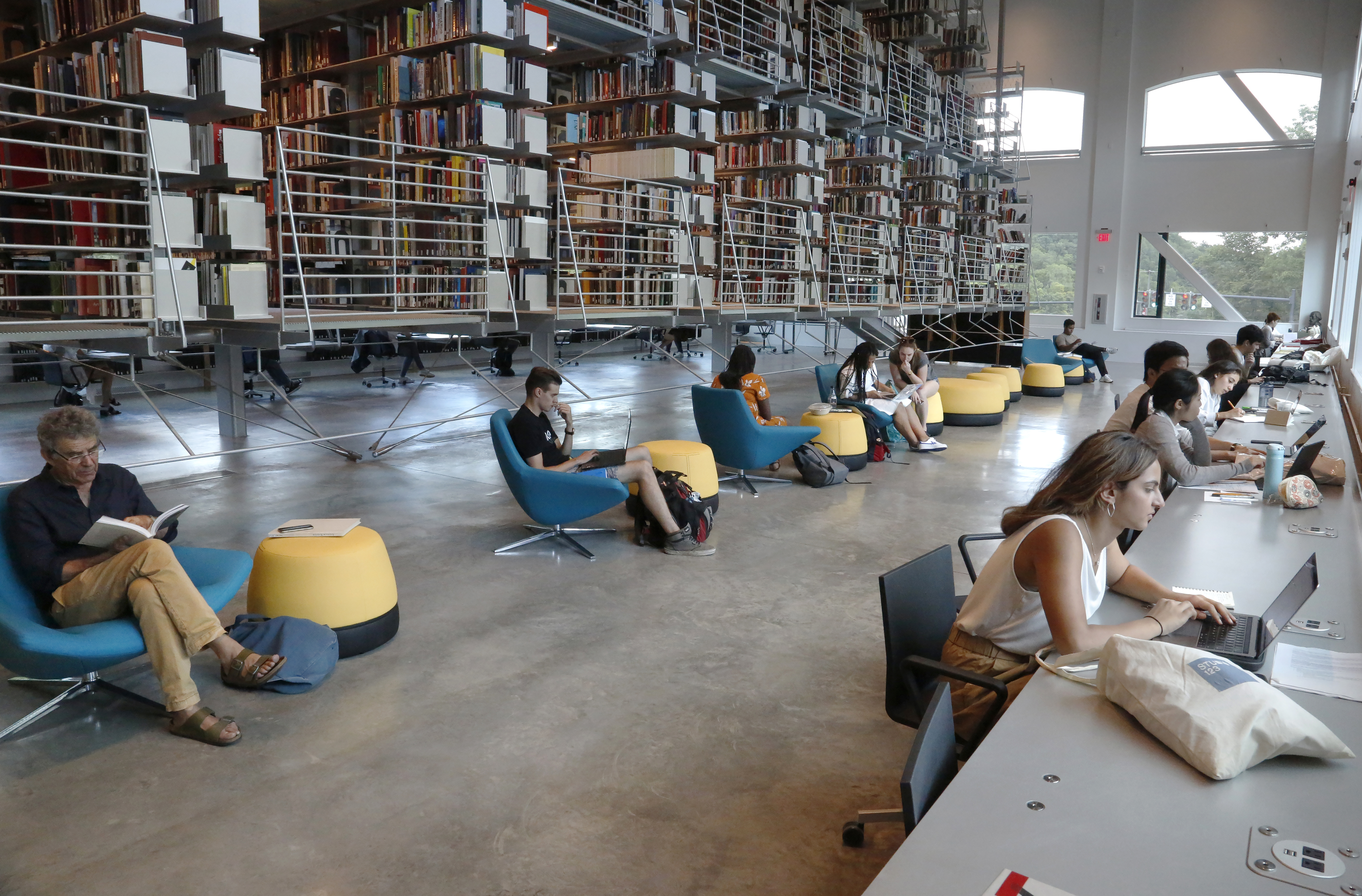
Checking out books at the Deborah Goodman Davis and Gerald R. Davis Service Desk.
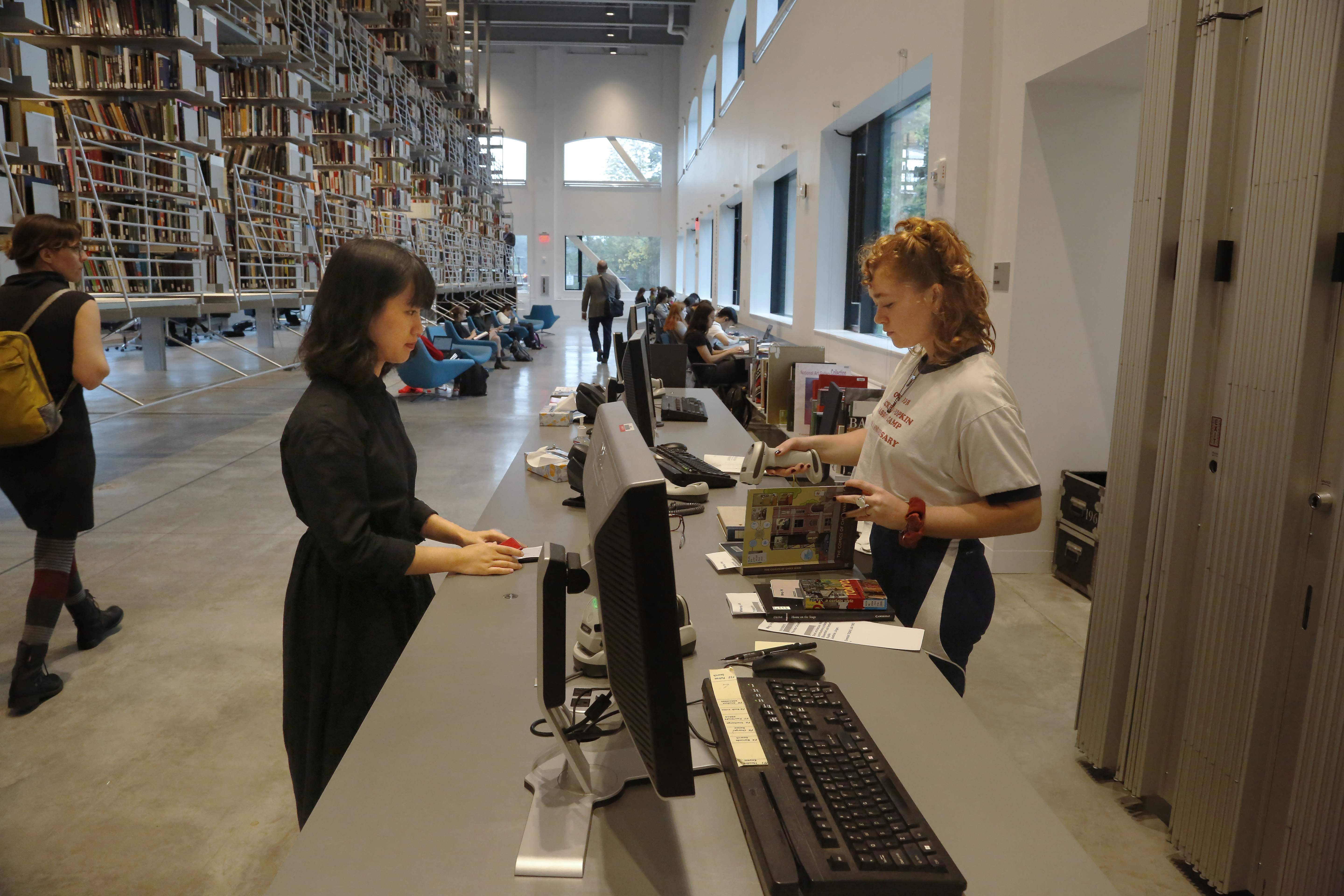
A view of Rand Hall, home of the Mui Ho Fine Arts Library.
Adaptive Reuse and Restoration
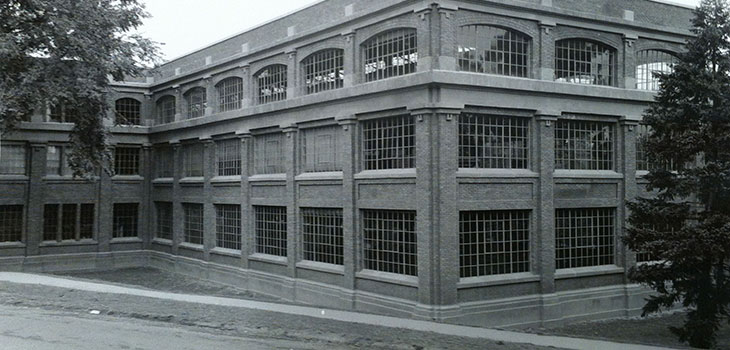
In more recent years, architecture design studios occupied the top two floors. The envelope of Rand Hall required extensive rehabilitation, including rebuilding significant portions of the parapet, restoring/replacing the concrete cornice and frieze, repointing large portions of the brickwork, replacing the roof, removing a 1968 external egress stair tower, and providing thermal insulation to the building. The building is LEED Gold in part due to the significant energy savings from upgrades that include thermal installation, double-glazed windows, and the replacement of all mechanical systems, resulting in a projected 70 percent reduction of Rand Hall's energy use.
ADA Compliance
As the authority with jurisdiction over the project, the city inspected the facility upon completion and confirmed its compliance with ADA standards. To aid individuals with mobility issues, all levels of the stacks have elevator access. The grated floors in the stacks can accommodate individuals with wheelchairs, canes, and other similar assistive devices. The library also offers a paging service for all its visitors, whereby library staff retrieves books upon the patron's request.
Brief History of the Collection
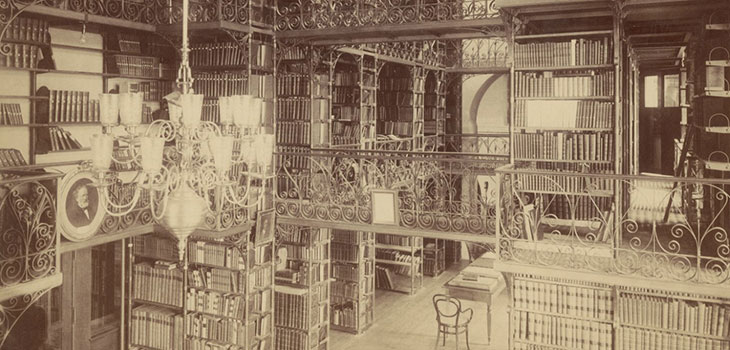
Thus, almost 140 years ago, two Cornell legends were founded simultaneously: one of the country's most acclaimed programs in architecture, and one of the country's most renowned fine arts library. Over the decades, the fine arts collection has grown to be one of the largest academic art and architecture libraries in the Northeast. The Mui Ho Fine Arts Library offers an ever-expanding collection of materials on architecture, art, city and regional planning, landscape architecture, and photography in various formats and in multiple languages. Growing by approximately 4,000 titles each year, the full collection comprises more than 267,000 volumes and subscriptions to more than 850 periodical titles. It is the most heavily used special collection at Cornell, valued across the university and well beyond as a teaching and research resource of rare quality.
Timeline
December 2017: Construction began
June 2019: Construction completed
August 2019: Opened for fall semester use